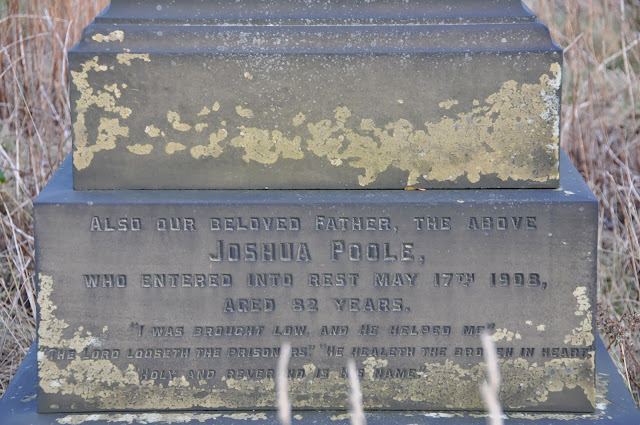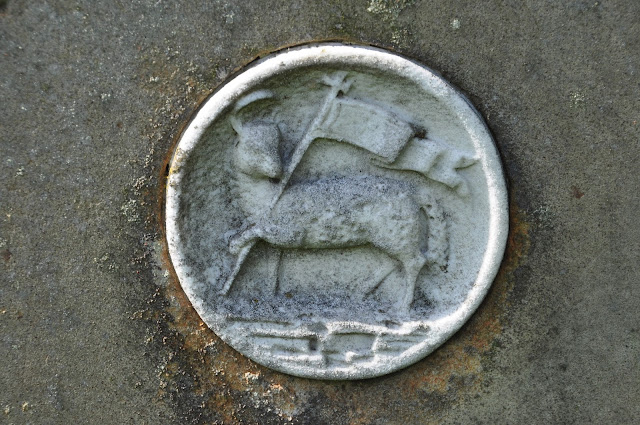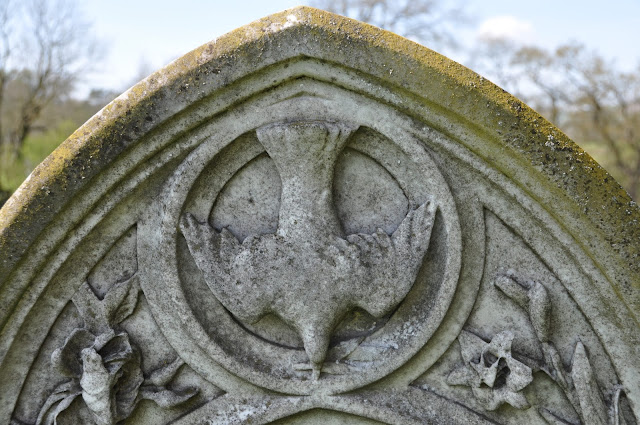The death took place on Sunday, May 17th, in Bradford, at the age of 82, of Mr Joshua Poole, an evangelist and temperance worker, who for many years was well known as " Fiddler Joss," Mr Poole's health broke down about twenty years ago, and in retirement he took up his residence at Halifax. Though little more than a name to the present generation, to those who had known him from the time of his first mission fifty years ago, " Fiddler Joss " was regarded as one of the most remarkable of modern evangelists. Born at Skipton, where his father followed the occupation of a saddler, he was a Sunday-school teacher in his youth, but, being of a roving disposition, he broke away from the family traditions, and in Bradford became a pothouse fiddler, a gambler, and a heavy drinker. In the course of time he became as familiar with the inside of a prison as he was of the public house. When at length his wife swore that her life was in danger from his oonstant violence, he was sent to prison for six months, not being able to offer the required security to be of good behaviour. In Wakefield Gaol he resolved, through the influence of the prison warder, to reform. From that time he became a pledged teetotaller, abandoned his loose life, and applied himself to steady industry. It was not long before he began to speak as an evangelist, and his fame spread far and wide. Indeed as a preacher to the masses, "Fiddler Joss" in his day had few equals. Along with his wife, Mary Poole, he conducted missions in all parts of the United Kingdom, and at one time was even induced to carry on a mission in France.
Tuesday, 31 December 2013
Fiddler Joss found Salvation!
Joshua Poole was an evangelist. The Manx Quarterly recorded his death, in 1908, thus:
The death took place on Sunday, May 17th, in Bradford, at the age of 82, of Mr Joshua Poole, an evangelist and temperance worker, who for many years was well known as " Fiddler Joss," Mr Poole's health broke down about twenty years ago, and in retirement he took up his residence at Halifax. Though little more than a name to the present generation, to those who had known him from the time of his first mission fifty years ago, " Fiddler Joss " was regarded as one of the most remarkable of modern evangelists. Born at Skipton, where his father followed the occupation of a saddler, he was a Sunday-school teacher in his youth, but, being of a roving disposition, he broke away from the family traditions, and in Bradford became a pothouse fiddler, a gambler, and a heavy drinker. In the course of time he became as familiar with the inside of a prison as he was of the public house. When at length his wife swore that her life was in danger from his oonstant violence, he was sent to prison for six months, not being able to offer the required security to be of good behaviour. In Wakefield Gaol he resolved, through the influence of the prison warder, to reform. From that time he became a pledged teetotaller, abandoned his loose life, and applied himself to steady industry. It was not long before he began to speak as an evangelist, and his fame spread far and wide. Indeed as a preacher to the masses, "Fiddler Joss" in his day had few equals. Along with his wife, Mary Poole, he conducted missions in all parts of the United Kingdom, and at one time was even induced to carry on a mission in France.
The death took place on Sunday, May 17th, in Bradford, at the age of 82, of Mr Joshua Poole, an evangelist and temperance worker, who for many years was well known as " Fiddler Joss," Mr Poole's health broke down about twenty years ago, and in retirement he took up his residence at Halifax. Though little more than a name to the present generation, to those who had known him from the time of his first mission fifty years ago, " Fiddler Joss " was regarded as one of the most remarkable of modern evangelists. Born at Skipton, where his father followed the occupation of a saddler, he was a Sunday-school teacher in his youth, but, being of a roving disposition, he broke away from the family traditions, and in Bradford became a pothouse fiddler, a gambler, and a heavy drinker. In the course of time he became as familiar with the inside of a prison as he was of the public house. When at length his wife swore that her life was in danger from his oonstant violence, he was sent to prison for six months, not being able to offer the required security to be of good behaviour. In Wakefield Gaol he resolved, through the influence of the prison warder, to reform. From that time he became a pledged teetotaller, abandoned his loose life, and applied himself to steady industry. It was not long before he began to speak as an evangelist, and his fame spread far and wide. Indeed as a preacher to the masses, "Fiddler Joss" in his day had few equals. Along with his wife, Mary Poole, he conducted missions in all parts of the United Kingdom, and at one time was even induced to carry on a mission in France.
Death of Four Brothers
This grave marks a very sad event. It states: Here lie the bodies of four brothers. They were the children of Station Master Robert Smith of the Midland Railway Company and his wife, Harriet. All contracted Scarlet Fever in 1880 and were dead within a week. They were:
Horace Richard
9 years
Rowland
7 years
Godfrey
4 years
Ralph
1 year 7 months
Monday, 30 December 2013
The Barlow Memorial
The very striking Barlow Memorial can be found in Bradford's Undercliffe Cemetery. It depicts a reclining mother holding a small baby in her arms. It commemorates Anne Wagstaff Barlow (1834-1867) and her daughter Sarah Elizabeth who survived just a few weeks after her birth in 1859. Some say it illustrates the perils of childbirth in Victorian times.
Saturday, 21 December 2013
Cat Sentinel on Winifred's Grave
I saw this grave in a Roman Catholic graveyard in Lancashireand noticed the stone cat that stands guard. I used my iPhone to get these shots and I am very taken by the eyes. They are so bright - whether monochrome or colour. The grave is that of Winifred and John Barnes who died in 1964 and 1966, respectively. Like many of the graves in this graveyard, the stone bears the words:
Jesus Mercy - Mary Help
Friday, 20 December 2013
1921 War Grave Headstone
Here is the war grave headstone of Bdr J J Howe, Royal Garrison Artillery who died February 4, 1921. He is buried in St Mary's & St John Southworth RC Church in Salmesbury, Lancashire.
The Commonwealth War Graves Commission commemorates those who died during the designated war years, while in Commonwealth military service or of causes attributable to service:
The end date for the First World War is the official end of the war, while for the Second World War, the Commission selected a date approximately the same period after VE Day as the official end of the First World War was after the 1918 Armistice.
The Commission only commemorates those who have died during the designated war years, while in Commonwealth military service or of causes attributable to service. The applicable periods of consideration are 4 August 1914 to 31 August 1921 for the First World War and 3 September 1939 to 31 December 1947 for the Second World War.[3] The end date for World War I is official end of the war, while for World War II the Commission selected a date approximately the same period after VE Day as the official end of the First World War was after the 1918 Armistice.
According to Wikipedia, a formal state of war persisted for another seven months, until the signing of the Treaty of Versailles with German on June 28, 1919. However, the American public opposed ratification of the treaty, mainly because of the League of Nations that the treaty created; the United States did not formally end its involvement in the war until the Knox-Porter Resolution was signed in 1921.
The Commonwealth War Graves Commission commemorates those who died during the designated war years, while in Commonwealth military service or of causes attributable to service:
First World War
4 August 1914 to 31 August 1921
Second World War
3 September 1939 to 31 December 1947
The end date for the First World War is the official end of the war, while for the Second World War, the Commission selected a date approximately the same period after VE Day as the official end of the First World War was after the 1918 Armistice.
The Commission only commemorates those who have died during the designated war years, while in Commonwealth military service or of causes attributable to service. The applicable periods of consideration are 4 August 1914 to 31 August 1921 for the First World War and 3 September 1939 to 31 December 1947 for the Second World War.[3] The end date for World War I is official end of the war, while for World War II the Commission selected a date approximately the same period after VE Day as the official end of the First World War was after the 1918 Armistice.
According to Wikipedia, a formal state of war persisted for another seven months, until the signing of the Treaty of Versailles with German on June 28, 1919. However, the American public opposed ratification of the treaty, mainly because of the League of Nations that the treaty created; the United States did not formally end its involvement in the war until the Knox-Porter Resolution was signed in 1921.
Sunday, 1 December 2013
Burials and Exhumation
Two more official war photographs from my collection. They show burial and exhumation.
The first is dated October 2, 1944 and was passed for publication by the US Army Press Censor on October 11. It is captioned:
War Ended for these Nazis
Dead Germans left behind by their retreating comrades are buried by Nazi prisoners of war in [a] cemetery at Eloyes, France.
I was struck by a number of things: the closeness of the wooden crosses, the visible lack of guards, the fact that the burials are outside of the cemetery and, most sadly, the pile of corpses in the foreground with a cross laid on each. The photograph was taken by a US Army photographer.
The second image is dated September 2, 1944 and was passed by the Censor four days later. The caption reads:
Bodies of Gestapo Victims exhumed in France
Under the Direction of a member of the French Red Croos, German prisoners exhume bodies of victims of the Gestapo in Grenoble for identification and appropriate burial in a common grave.
I found some footage of another exhumation in Grenoble on this link:
http://www.criticalpast.com/video/65675049517_coffins_placing-flowers_victims-of-Gestapo_digging-graves
The first is dated October 2, 1944 and was passed for publication by the US Army Press Censor on October 11. It is captioned:
War Ended for these Nazis
Dead Germans left behind by their retreating comrades are buried by Nazi prisoners of war in [a] cemetery at Eloyes, France.
I was struck by a number of things: the closeness of the wooden crosses, the visible lack of guards, the fact that the burials are outside of the cemetery and, most sadly, the pile of corpses in the foreground with a cross laid on each. The photograph was taken by a US Army photographer.
The second image is dated September 2, 1944 and was passed by the Censor four days later. The caption reads:
Bodies of Gestapo Victims exhumed in France
Under the Direction of a member of the French Red Croos, German prisoners exhume bodies of victims of the Gestapo in Grenoble for identification and appropriate burial in a common grave.
I found some footage of another exhumation in Grenoble on this link:
http://www.criticalpast.com/video/65675049517_coffins_placing-flowers_victims-of-Gestapo_digging-graves
Saturday, 30 November 2013
American War Dead
Here are two of number of Second World War official photographs that I purchased at militaria fairs during the past forty years. This pair have an uncommon subject - depictions of American war dead.
The first is captioned 'American Dead on Beachhead, France' and was passed for publication by the US Army Press Censor on June 26, 1944. The caption reads:
These American assault troops died in their attempt to storm across a narrow strip of beach on the northern coast [of] France to the comparative safety of a chalk cliff of [sic] a few hundred feet from the surf.
The second image is titled 'July 11, 1944 - American Dead in France and was passed by the Censor on July 27, 1944. It is captioned:
American soldiers killed in action fighting for the liberation of France lie stretched out at a temporary graveyard in Normandy. The bodies are swathed in sheet and grave markers bearing the names of the soldiers rest on top of the corpses. After this war, the bodies will be removed from the temporary graves and transported back to the United States or to permanent cemeteries in Europe. In the first ten days after the Allied landings in northern France June 6, 1944, US Forces suffered 15,883 casualties including 3,283 known dead.
The first is captioned 'American Dead on Beachhead, France' and was passed for publication by the US Army Press Censor on June 26, 1944. The caption reads:
These American assault troops died in their attempt to storm across a narrow strip of beach on the northern coast [of] France to the comparative safety of a chalk cliff of [sic] a few hundred feet from the surf.
The second image is titled 'July 11, 1944 - American Dead in France and was passed by the Censor on July 27, 1944. It is captioned:
American soldiers killed in action fighting for the liberation of France lie stretched out at a temporary graveyard in Normandy. The bodies are swathed in sheet and grave markers bearing the names of the soldiers rest on top of the corpses. After this war, the bodies will be removed from the temporary graves and transported back to the United States or to permanent cemeteries in Europe. In the first ten days after the Allied landings in northern France June 6, 1944, US Forces suffered 15,883 casualties including 3,283 known dead.
Thursday, 24 October 2013
Toppled Tombstones
Here is a selection of images of toppled gravestones in a small Darwen churchyard. They litter the ground behind the church or are tipped under a hedgerow. I think it very sad as some are quiet early.
Wednesday, 23 October 2013
Highlighting the Male of the Family
I recently a small churchyard in Darwen Lancashire and was struck by the inscription on several of the grave markers. The name of the man was writ large while that of the woman was less prominent. Perhaps it was the custom of the time?
Friday, 13 September 2013
St John Ambulance Brigade Memorial
Morecambe cemetery in Lancashire contains an unusual memorial to a Fred Siddle who served with the St John Ambulance Brigade in the Boer War and died in South Africa on November 21, 1900. An inscription at its base records that it was erected by his sorrowing parents.
A very useful overview of the St John Ambulance Brigade in the South African War 1899-1902 providing a wealth of information on casualties and memorials can be found HERE. It records that 1505 Pte Fred Siddle died of disease and is commemorated in the Book of Remembrance in St George's Cathedral in Cape Town.

A very useful overview of the St John Ambulance Brigade in the South African War 1899-1902 providing a wealth of information on casualties and memorials can be found HERE. It records that 1505 Pte Fred Siddle died of disease and is commemorated in the Book of Remembrance in St George's Cathedral in Cape Town.

Sunday, 8 September 2013
Saturday, 7 September 2013
Friday, 30 August 2013
Subscribe to:
Comments (Atom)
Welcome to the Graveyard Detective
An illustrated look at the World of Graveyards and Cemeteries. There are many Stories behind the Stones that Stand in them. Who knows what we might find?


























































